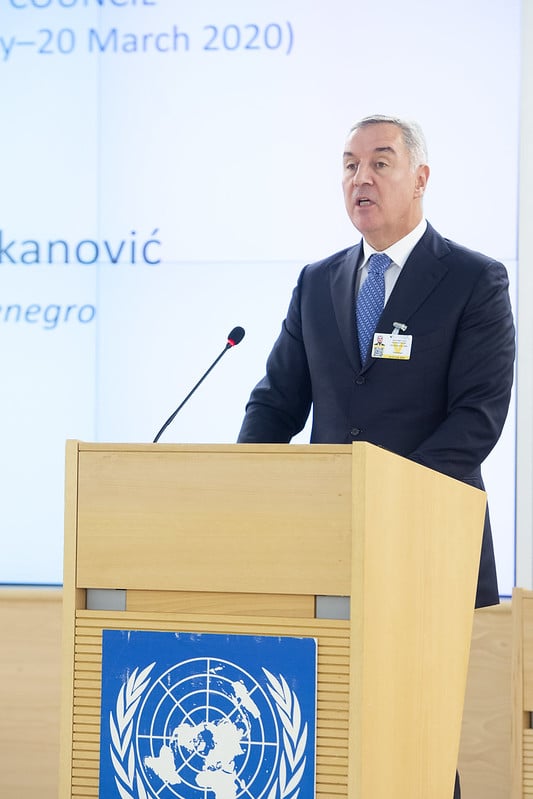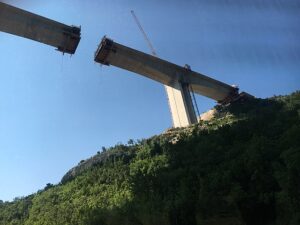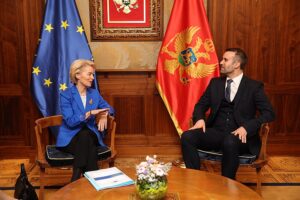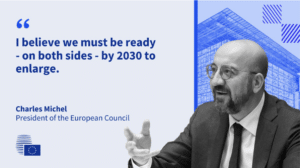Milo Đukanović (DPS) speaking at a UN Summit in Geneva, February 2020 (source: Flickr)
After only three-and-a-half months in office, PM Abazović’ (URA) saw the end of his government after a motion of no-confidence on August 20, 2022 – the shortest-running administration in Montenegrin history. Political instability is set to continue in the country as the same parties and blocs that formed a coalition after the 2020 elections now plan to form a new government until spring 2023 general elections.
The Serbian Orthodox Church
Disagreements in the cabinet on the Serbian Orthodox Church (SPC) have caused the ousting of the Abazović administration. On August 3, Abazović signed a highly controversial agreement with the SPC regarding relations between the Church and the Montenegrin state – an important source of contention as pro-European parties in the country accuse the SPC of being a vehicle for Serbian political influence. Earlier, the 2020-2022 coalition highly disagreed over various issues surrounding the SPC too, such as on real estate ownership rights. Abazović sought to partially end these discussions, saying the deal was intentioned to heal divisions between Montenegro’s pro-Serbian and pro-EU parties.
The role of Đukanović
Montenegrin President Milo Đukanović of the Democratic Party of Socialists (DPS) immediately slammed the agreement, calling for a motion of no-confidence. The DPS was a crucial partner for the URA-led minority coalition – and the withdrawal of support by Đukanović ushered in an end of the coalition. In the end, Montenegro’s 81-seat parliament voted 50-1 in favour of removing Abazović’ cabinet.
Đukanović’ remains crucial in Montenegro’s politics. He is a highly controversial figure as he is linked to corruption, organized crime, and the regression of media freedom in the country. Đukanović’ has governed Montenegro for almost three decades until being removed by a diverse set of parties in 2020. This heterogenous coalition proved unstable as Montenegro sought to accelerate its bid towards EU accession. The DPS remains Montenegro’s biggest party, albeit acting from opposition. Moreover, Đukanović’ is Montenegro’s President and thus remains a key figure in the country’s politics.
A new coalition
Political instability in Montenegro is set to continue with its new coalition, similar to the capricious 2020-2022 cabinet of PM Krivokapić. It is comprised of various pro-Serbian parties from the ‘Democratic Front’ and ‘Peace is Our Nation’ coalitions, next to the Socialist People’s Party and Abazović’ URA. These parties have a slender majority in Montenegro’s parliament (41-40 seats).
The parties have mainly agreed to prepare for new snap parliamentary and presidential elections in the spring of 2023. They also agreed to replace current parliament speaker Đurović and to focus on European integration, economic reform and the fight against corruption.
It remains dubious whether this new coalition is able to fulfil these goals. They have shown in their 2020-2022 spell to be unable to improve Montenegro’s economic situation and to accelerate EU accession procedures. The polarization in Montenegro between pro-EU and pro-Serbian parties remains a key obstruction to much-needed structural reforms. These divisions will probably not be healed by this new coalition – especially with electoral campaigning and important general elections on the horizon.
Sources: Balkan Insight I Al Jazeera EuroNews Balkan Insight II
Photo: Flickr



